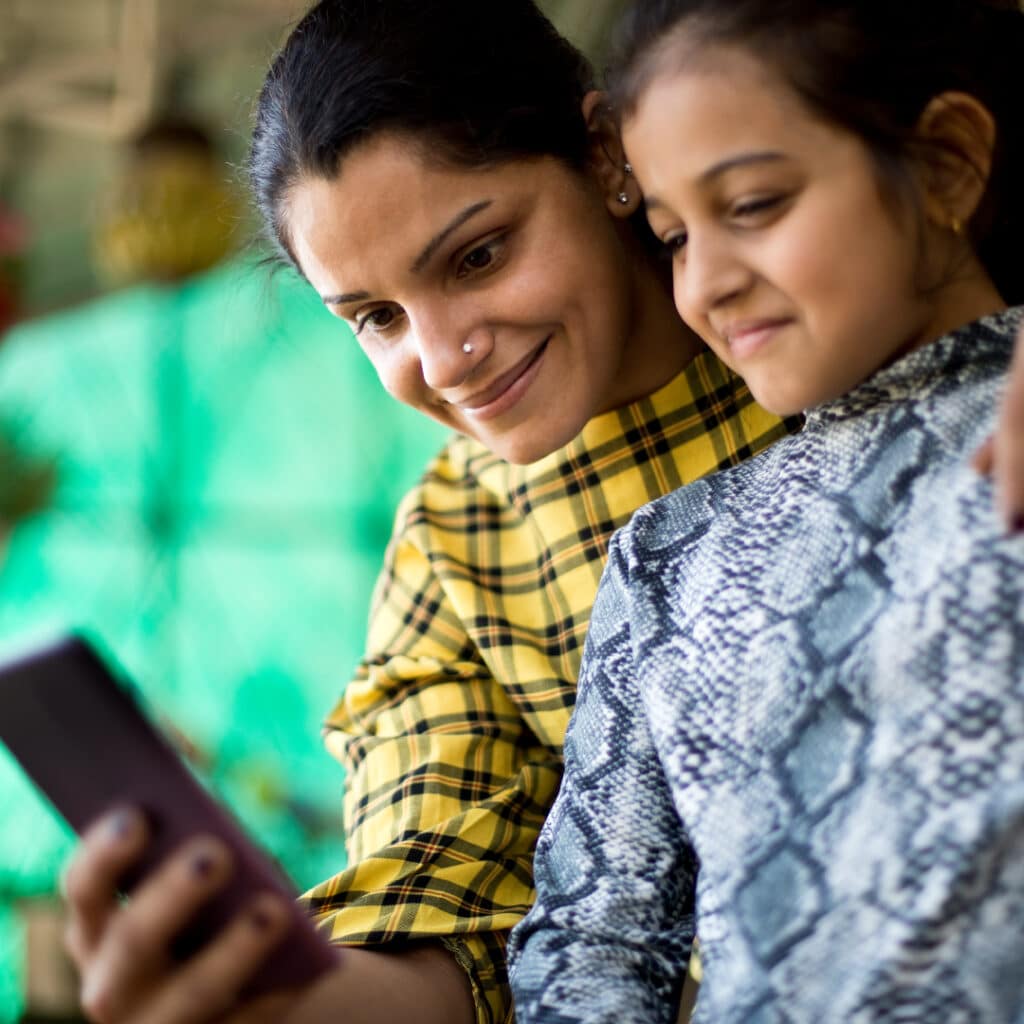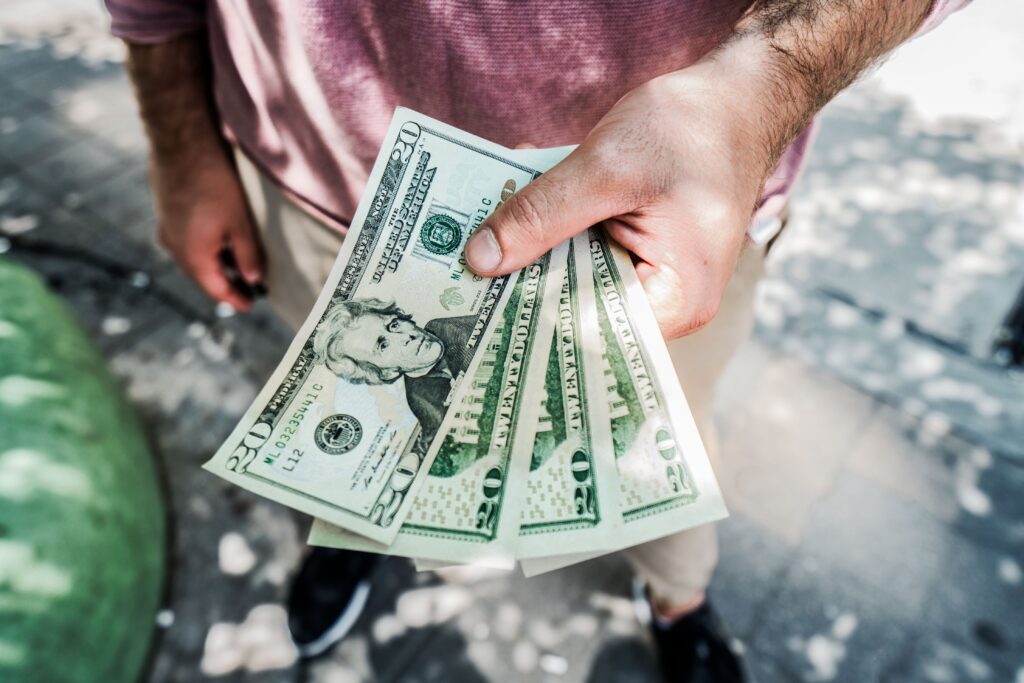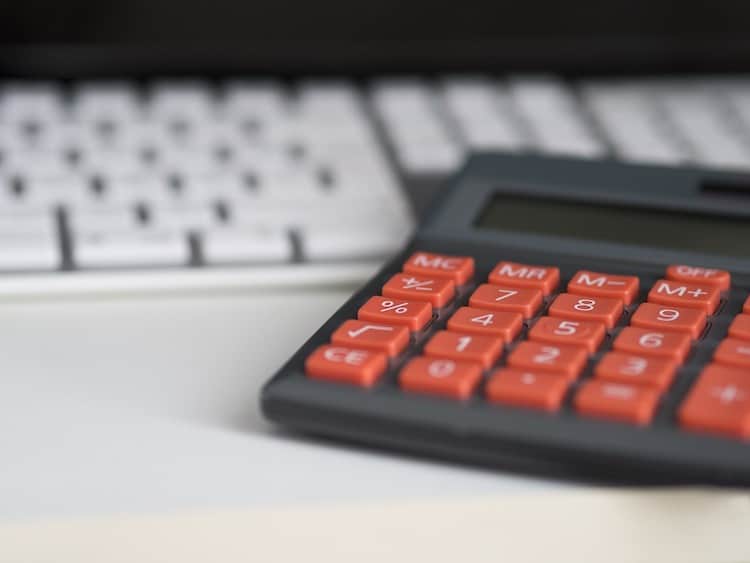
Finding the best rupee conversion can feel like a challenge. You’ve worked hard for your dollars, pounds, riyals, or other foreign currency. The last thing you want is for your international money transfer to eat up your salary in fees.
In this guide created by our team at Remitly, we’ll review how currency exchange works, why the rupee has such high exchange rates, and how you can get a better deal on an INR rate.
Currency exchange explained
An exchange rate tells you the value of one currency compared to another. These rates are used for currency exchange. For example, you may see the following when looking for dollar-to-rupee rates:
USD/INR 82.10
This means that the value of one US dollar is 82.10 rupees. In this example, USD/INR is called a currency pair. You can use conversion rates for USD to INR or INR to USD.
What determines the INR exchange rate?
One thing you will notice is that the value of a currency pair changes often. Look at an INR chart, and you’ll see that a few years ago, the USD to INR was close to 67 rupees. So why did it jump?
The exchange rate is calculated on several factors between the two currencies, such as:
- Differences in inflation (how much a rupee can buy over time);
- Differences in interest rates;
- Demand for foreign currency in each country;
- Government debt;
- Import/export activity for both countries; and
- The stability of each country’s economy and government.
As you can see, issues like inflation, trade activity, and demand for foreign currency can change on a daily, monthly, quarterly, or annual basis. Because these change regularly, the value of a currency pair changes often.
In other words, the rate you get today may not be what you get tomorrow. Foreign exchange rates can even change hour by hour, as the current USD and INR values can fluctuate throughout the day.
How do you check INR rates?
Indian rupee stats can vary from source to source. The best approach is to use more than one currency converter to get a feel for how Indian rupees are currently trading compared to other currencies. To do so, you typically only need to enter the currency code for the Indian rupee, which is INR, as previously stated.
If you’re planning to conduct an exchange transaction in the future, you may want to look at an INR forecast. Just keep in mind that forecasts are just predictions and may not ultimately end up reflecting actual Indian rupee prices.
Why are INR conversion rates so high?
The major reasons it takes so many rupees to buy a single dollar, pound, or riyal are that India has:
- A higher rate of inflation;
- Higher interest rates;
- Government debt;
- A greater demand for foreign currency; and
- Volatility in the economy.
Market forces like supply and demand generally determine rupee rates, but the Reserve Bank of India can step in if the exchange rate begins to swing wildly. You can read more about this type of “managed float” system in our guide to exchange rates here.
The takeaway? Exchange rates will go up and down over time. That’s why it’s more important for you to focus on lowering your fees than on waiting for a great exchange rate.
There are many ways to convert your foreign currency to rupees and rupees to another currency. But where they really make a difference to you is through their fee structure.

Sending money to India: converting to Indian rupees
There are two basic options for sending funds to India and converting your dollars, pounds, riyals, or other currency into rupees. If you want a US dollar to Indian rupee, pound to rupee, dirham to rupee, or another similar exchange, you have two methods available. Let’s take a look at each one.
Banks
One option is to initiate an international wire transfer from your financial institution. When you do so, your bank will convert USD to INR or another currency to Indian rupees and then send the money electronically to your loved ones.
The main benefit of wire transfers is you can use your existing banking information and don’t have to register for additional accounts. However, financial institutions may charge hidden fees and offer less favorable rates for USD to INR and other currency conversions.
Money transfer services
If you’re seeking a more affordable way to send funds to your loved ones, it’s usually better to use a money transfer service. This is because their fee structure is different from traditional banks. Digital providers, like money transfer apps, are often the best deal.
With the Digital India initiative and the rising use of digital wallets and online banking, you will probably be able to send transfers directly to your or your relative’s Indian bank account through apps like Remitly. These transaction funds will convert into rupees by the time the funds are received.
Using Remitly to send to India
Let’s consider the Remitly platform. Remitly allows bank deposits to hundreds of Indian banks and UPI deposits (virtual payments) at an affordable rate. For transfers less than USD 1000, both the economy and express transfer fees are for the same flat rate of 3.99 USD.
Once you set up an account and verify your identity for the first time, your transfers are very easy.
Remitly usually only needs your name, bank account information, phone number, and reason for the transfer. Sending a money transfer to India can really be that simple.
With the Remitly app, it’s possible to send from the United States, the UK, Australia, Canada, Singapore, and many other countries.
You can check their exchange rates daily here for USD to INR, here for GBP to INR, and here for CAD to INR.

Sending money from India: converting Indian rupees to another currency
If you’re sending or exchanging rupees for another currency, the scenario is similar with a financial institution. Let’s say you want a rupee to dollar, rupee to pound, rupee to riyal, or similar currency exchange.
With most banks, you have two options. You can either convert your rupees with a Foreign Currency Demand Draft, which you need before you leave the country, or you can make an online transfer.
If you choose to transfer online, you’ll often find higher fees and longer wait times. First, you can only remit outside of India for certain purposes. Otherwise, you will need to visit your branch in person. Then, there are minimum and maximum limits on transactions.
What’s more, you will have to pay commissions and GST (Goods & Services Tax) every time you make a transfer this way.
What about exchanging Indian rupees outside of India?
There are many ways to exchange rupees for other currencies, whether you need US dollars (USD), Swiss francs (CHF), Japanese yen (JPY), or any other. Options include all of the following.
Bank foreign exchange services
Some financial institutions will exchange the Indian rupee for the local currency. While working through banks can be convenient, you may not get the best conversion rates and can be subject to higher fees.
Airport currency exchange desks
One of the most popular options is to visit currency exchange desks at airports. Certainly, the airport exchange is convenient if you’re in a hurry, but you usually won’t get the best exchange rates, just like with banks.
Bank wire transfers
A wire is a third option. If you have an account in both your origin and destination countries, you can opt for this. Double-check the processing fee ahead of time to avoid costly surprises.
Hotels
Some hotels that cater to foreign travelers can also help you change the Indian rupee into local currency. Exchange rates and fees can vary greatly, so inquire about the details before your trip.
Third-party services
Most large cities are home to cash exchange services and other providers that will exchange your Indian rupee bills and coins for the local currency. They may offer better rates and lower fees than financial institutions and airport counters, but be sure to research your options ahead of time to ensure that you choose a reputable provider.
ATMs
If you have just arrived in a country and don’t have an account there, you can usually convert your money by withdrawing cash at an ATM. Your financial institution may charge you a foreign transaction fee and/or a currency conversion fee for this service.
Credit cards
If you’re on a short visit, you can also simply use your international credit card. Both ATM withdrawals and credit card payment options are ideal for tourists but can become expensive for students and immigrants. If you’re planning to stay for a longer residency, it’s often a good idea to open an account there.
You can read our guides to opening a bank account in the US, the UK, or Canada for more details.

Finding the best rupee exchange rate
When sending funds to India, the calculations regarding the transfer will be carried out by the bank or remittance company. That being said, it’s always good to understand exactly how it works. The formula is straightforward:
Send Currency x Exchange Rate = Receive Amount
How does this work in the real world? Let’s take three examples involving Indian Rupee transfers.
How to convert GBP to INR
Let’s say you’re living in the UK and want to send 100 GBP to a loved one back home, and the current exchange rate is 1 GBP = 100.64 INR. The calculation would go like this:
100 GBP x 100.64 INR = 10,064 INR
This isn’t quite the end of the story, though. You also need to factor in the transfer fee, which has to be deducted from the amount above.
Let’s say you’re making the transfer through a hypothetical bank that charges 6 GBP for sending funds to India. This equates to 603.84 INR. So, here’s the calculation to see what your loved one will actually receive:
10,064.00 INR – 603.84 INR = 9460.16 INR
At the time of writing, this same transaction with Remitly has a fee of 1.99 GBP if you take our Express option. This would equate to only 200.27 INR, by the exchange rate quoted above, providing a substantial saving compared to the example scenario outlined here.
How to convert USD to INR
The process for converting USD to INR is the same as it is when conducting a British pound to Indian rupee exchange. Let’s look at the calculation for converting $100 US dollars to the Indian rupee.
100 USD x 82.10 INR = 8,210 INR
This would get you 8,210 INR from the U.S. 100-dollar bill.
Once you have this number, you can subtract the costs, fees, and taxes to get the total remittance amount.
How to convert EUR to INR
Finally, let’s take a look at an example of converting 100 Euros to INR.
100 EUR x 87.73 INR = 87,730 INR
From this transaction, you would receive 87,730 Indian rupees. Then, you’d subtract fees, taxes, and other costs to determine the actual amount of the remittance, just as you did when converting USD to INR and GBP to INR.
Getting the best deal
There are many ways to convert rupees to other currencies and vice versa. But not all of them are made equal.
When looking for a way to send funds home, every dollar matters. That’s why choosing low-fee and online solutions is so important. Not only can your family have access to financial stability, but you can also send more at the same time.
